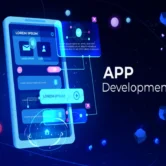
How can a redesign support better localization for Indian languages?
Multilingual Content Architecture
- Redesign allows implementation of language-specific content structures using subdomains or folders.
- CMS platforms can be reconfigured to manage translations for Hindi, Tamil, Bengali, Marathi, and more.
- Navigation menus, headers, and footers can be customized per language for a localized experience.
- Page builders and plugins like WPML or Polylang make managing multiple languages easier.
- Localized content helps businesses connect more deeply with regional markets.
Regional UX and Interface Customization
- Font support for Devanagari, Tamil, and other scripts is integrated during redesign.
- RTL (Right-to-Left) layout support is added where needed for specific Indian scripts.
- Cultural UX cues like local symbols, calendar formats, and address fields are incorporated.
- Visual elements, CTAs, and images can be adapted to resonate with regional audiences.
- Icons, illustrations, and labels are made culturally neutral or region-specific.
SEO Optimization for Regional Searches
- Hreflang tags are configured to indicate language-specific versions of pages to search engines.
- Regional keywords are integrated to improve visibility on local search queries in different languages.
- Meta tags and alt texts are translated for every localized version.
- Local business schema and Google My Business integration help target regional traffic.
- Regional URLs (like /hi, /ta, /bn) help organize and index content better.
Mobile-First Localization Strategy
- Redesign prioritizes mobile readability of Indian scripts on smaller screens.
- Optimized fonts, layouts, and lightweight assets improve performance across devices.
- Input fields are adjusted to support Indian language keyboards and voice input.
- Mobile menus accommodate multilingual toggling without clutter.
- Regional customization improves engagement in Tier 2 and Tier 3 cities.
Better Engagement and Inclusivity
- Users are more likely to stay and convert when content is presented in their native language.
- Localization builds trust, especially for government services, education, and rural outreach.
- Brands appear more inclusive and sensitive to linguistic diversity.
- Multilingual FAQs and chatbots improve user satisfaction and support.
- Localization supports regional campaigns, seasonal promotions, and vernacular outreach.





